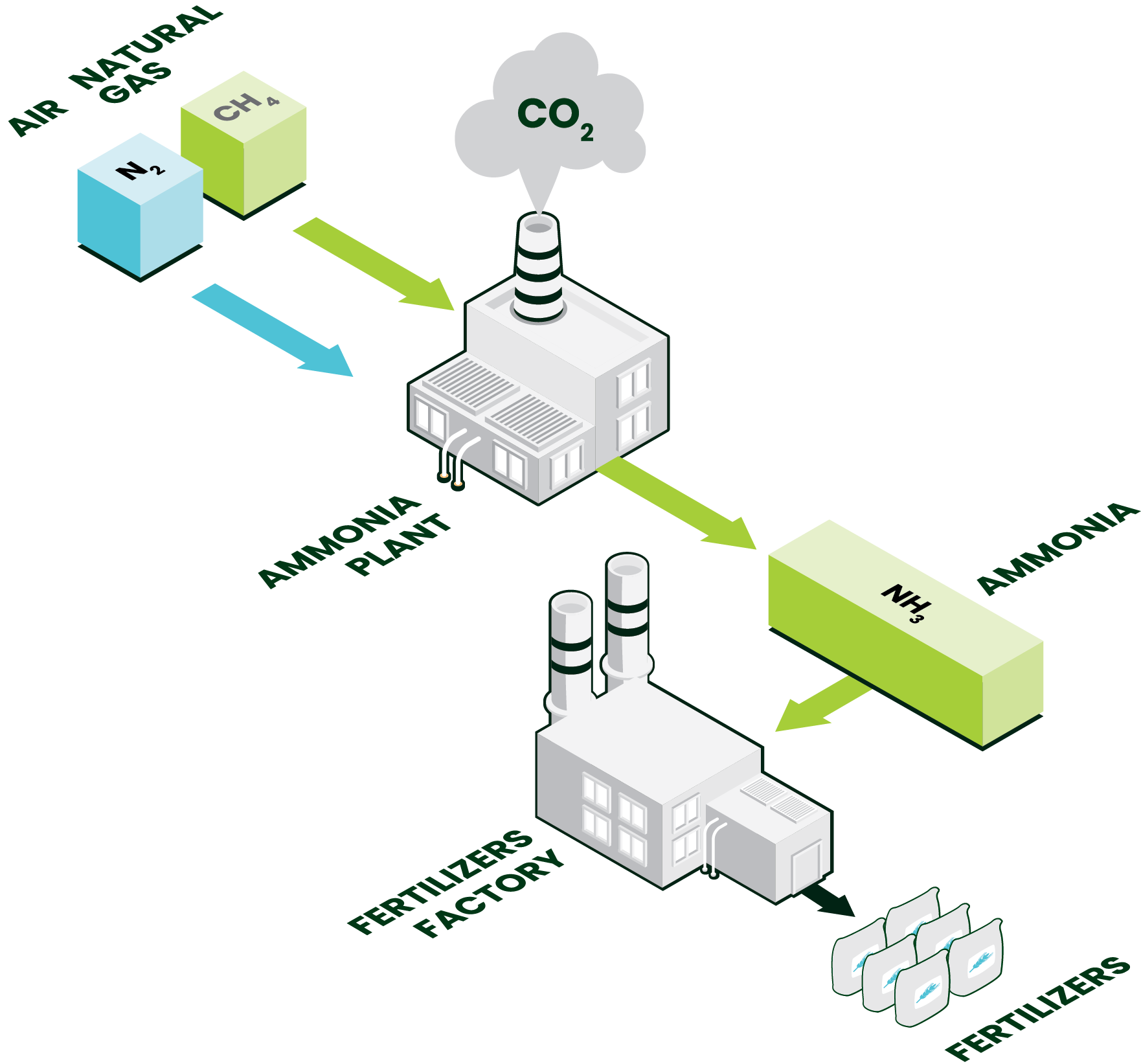Green ammonia and low-carbon fertilizers
Current ammonia and fertilizer production
Today’s production of nitrogen fertilizers is energy intensive. In Europe, ammonia production is mainly based on natural gas as a raw material and steam methane reforming (SMR) as the main technology.
The first step involves splitting the natural gas molecules with the help of steam and high temperatures, to obtain hydrogen and CO₂.
In a second step, this hydrogen is then combined with nitrogen from air to produce ammonia. Although it is the least carbon intensive of the technologies available today, SMR nevertheless generates large quantities of Carbon Dioxide CO₂.

Fertilizer industry reaching technical limit in decreasing emissions

Fertilizer industry’s excellent record in decreasing GHG emissions
₂The European fertilizer industry has overall made tremendous improvements in the energy efficiency of ammonia production.
The physico-chemical limitation of the present technology means that future investments are likely to improve efficiency only marginally. Newly build plants are generally very efficient, but on average, Europe’s ammonia plants despite their average age are still the most energy efficient in the world and have the lowest CO₂ emissions.
In the past two decades, European fertilizer producers have led the way globally by drastically reducing the emission of nitrogen dioxide (N₂O), a powerful greenhouse gas, from their production.
Going beyond current production technology requires major developments in energy infrastructure, price competitiveness of green energy, scientific breakthroughs and markets for low carbon products.
Emerging low carbon technologies

GREEN AMMONIA AND LOW-CARBON FERTILIZER PRODUCTION IN 2050

Ammonia as the most cost-effective energy carrier

Beyond fertilizers – creation of the market for green ammonia

Priorities to advance the transition
By 2050 – under the right conditions –
ammonia production could be based on
decarbonised sources of energy.

As the European Commission moves ahead with its decarbonisation plans for the EU economy, it is essential that the policies proposed include the potential role ammonia could play in the decarbonisation effort. Support for research and pilot projects and the implementation of necessary standards for energy infrastructure and transportation are needed.
